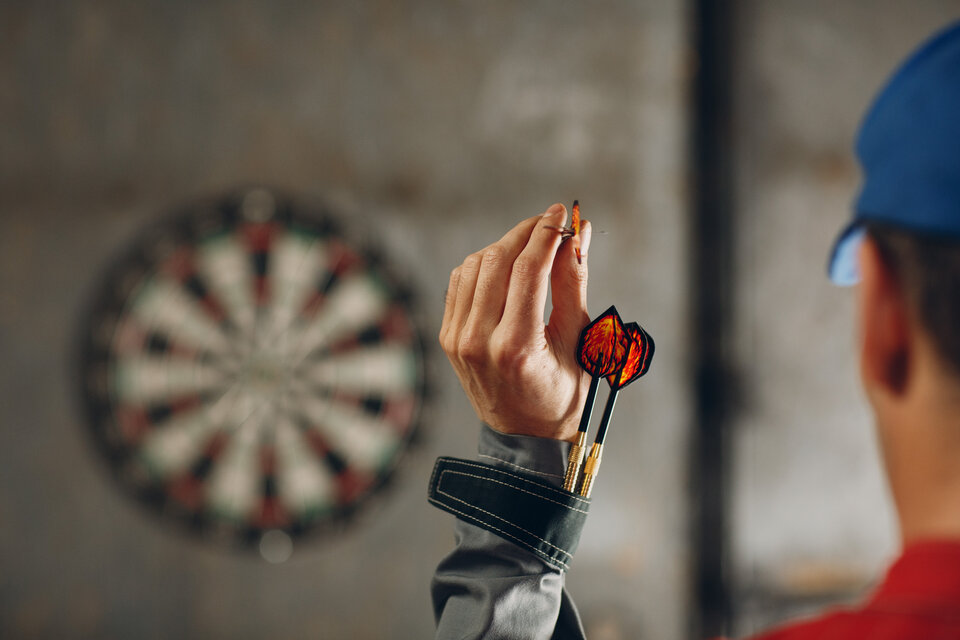Purchasing your first set of darts might come easy for most players. However, as you start experimenting with different techniques and your throws improve, you will want to make sure that the darts you use maximize your chances to score. For this to happen, you must pay attention to each one of the dart’s elements, such as the flights, and choose the design that suits you best. To help you out, our team put together this short guide. Read on and discover how to choose the right darts flights.
The first thing you should note is that dart flights, also called wings, offer drag; they are not meant to boost the dart’s lift, but to steer it in the right direction and maintain a consistent flight trajectory. The purpose of the flight is to support the dart while moving through the air in order to reach the target.
The second thing you will notice if you browse through any darts supplies store is that flights come in a wide variety of shapes and patterns. Their thickness, as well as their design and weight differ, but these are the two main types flights you will come across:
- Standard flights
These flights are easy to adapt to any type of dart and they are the most common choice among players of all levels. If you are new at darts, you might as well want to start playing with this type of flight.
Standard flights are larger than their slim counterparts and they can help you achieve more control and balance. Standard flights are ideal for heavier darts. Due to their weight, these darts would reach the target with more difficulty if you used smaller flights. They need standard-sized flights that can ensure more support and allow the heavier shafts to move easier.
- Slim flights
These flights, as you might expect, are smaller than standard ones. They do a great job at increasing the speed of your dart, but if you are yet a beginner, you might find it harder to control your dart if you are using these flights.
Slim flights are perfect for lighter darts that don’t require as much support as heavier darts in order to be able to reach the target. Another merit of these smaller flights is the fact that they allow you to achieve tighter groupings. This way, when you’ve got multiple darts in the same section of the board, you don’t risk making some of them bounce out when they get hit by incoming darts, since these flights require less space and they can squeeze easier among other darts.
Finally, when you play a game of darts, remember that you should be using the same type of flights for all the darts you’re playing with. To determine which type of dart wings are better for your throwing style, you should test different models.
As a general rule, if you use heavier darts, you should start playing with standard flights. Conversely, if you prefer lighter darts, you should be using small, slim flights.
We hope these tips have inspired you and we wish you good luck in finding out which style of flight suits you better. If you ever need this type of accessories or any other piece of darts equipment, feel free to browse through our catalog.






Nice to see the pros and cons of flight design being explained. I’m sure a lot of casual players would normally dismiss fllght design as purely artistic and not realize the subtle engineering differences.
I second what Gareth said in the above response. I am grateful for such insight. At this point in my life, the over 70 crowd, developing a deeper understanding of finesse, and technique add to my pleasure. We have started a neighborhood “tournament” starting soon for our outside tournament arena and the comradery is infectious. I would suggest putting all of your advise in book form for us to use out in the environs. Gary